 Palo Alto Stanford Heritage
Palo Alto Stanford Heritage 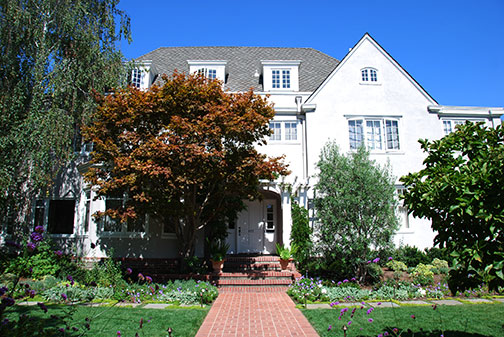 |
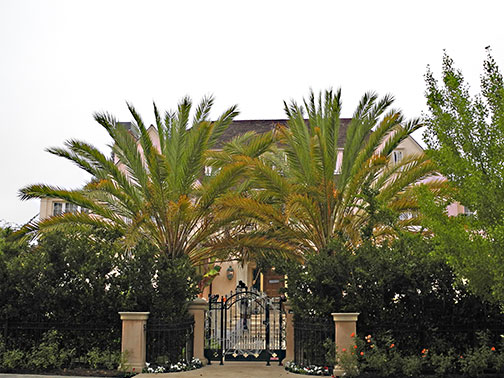 |
| 855 Hamilton Avenue | 865 Hamilton Avenue |
A March 1916 article in the Palo Alto Times boasted that 855 Hamilton Avenue was one of “the year’s finest productions in residences.” Caroline Ray and her son, Robert, built 855 and 865 Hamilton at a cost of $30,000. The Ray family was involved in real estate in Palo Alto and, before 1910, in Duluth, Minnesota where they had also built landmark mother–son houses on the same block.
The Rays chose Charles Kaiser Sumner to be the architect of 855 Hamilton. Sumner designed more than fifty residences in Palo Alto between 1916 and 1941. While his commissions included the occasional office building, school, church and country club, his residential buildings are more typical of his work—the bulk of which was stylish housing for the comfortable middle class. His clients were professionals and business people, as well as academics. He built an additional twenty residences on the Stanford campus. Born Charles Sumner Kaiser in Wilkes–Barre, Pennsylvania in 1874, he reversed the order of his middle and last names during World War l. Sumner graduated from Columbia University School of Architecture and then went to Europe and the Middle East on a Perkins traveling fellowship. He began his working life in New York for the firm of McKim, Mead and White at a time when that prestigious firm carried out its most fabulous metropolitan commissions.
After a visit to the West Coast in 1906, he moved to Berkeley where he lived and practiced for ten years. Sumner built fifteen houses there as well as the Claremont Club. Moving to Palo Alto in 1916, Sumner established his practice and lived on University Avenue. One of his first Palo Alto houses, 855 Hamilton Avenue sits on .55 of an acre and is a 6,500 square foot interpretation of an English manor. It has asymmetrical gables, steeply pitched roofs and tall, narrow banks of windows. This residence reflects a certain formality, with separation between private and public spaces and between spaces for the servants and the served.
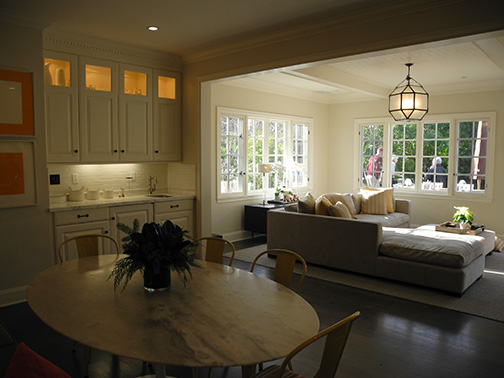
Sumner’s houses, built for entertaining, were imbued with a feeling of permanence, restraint and composure, which he deemed elements of beauty. The brick walkway at 855 Hamilton leads to a resplendent red maple and a wisteria–covered porch. An arched entry flanks the front door with glass sidelights. The interior door trim has classic dentil molding and carving, which is repeated in the fireplace mantle. Original quarter–sawn oak floors and a grand, curved staircase grace the sun–filled foyer. We see arched leaded glass windows both at the upper landing and at the stairway down to the powder room. A study to the left of the foyer has leaded glass windows, built–in bookcases and paneling. Pocket doors lead to the living room with its original leaded glass front windows, fireplace mantle, and built–in, arched bookcases with bead board backs.
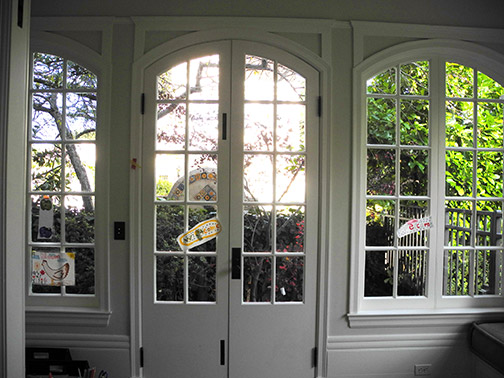
Adjacent to the living room is another study, formerly a sun porch, with original windows and latticed paneling. The dining room continues the arched motif in its built–in cabinetry with batten board backs. French doors with delicate leaded glass lead to the sunroom.
The kitchen, formerly used only by servants, was remodeled and expanded in 2006. The original butler’s and pastry pantries have been combined. The sunroom and verandah are now one large room.
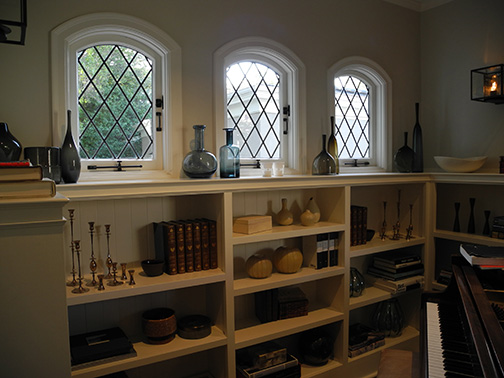 |
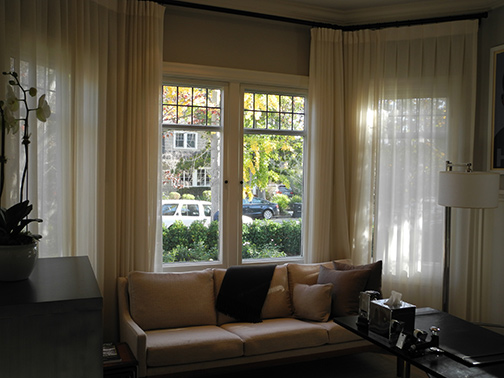 |
Charles Sumner believed that it takes both house and garden to make a home. The beautiful landscaping, pool, spa, tennis court and raised patio with fireplace are certainly an integral part of this home. 855 Hamilton Avenue is eligible for Palo Alto’s Historic Inventory and for the National Register of Historic Places.
Margaret Feuer
PAST November 16, 2012,
E-mail us at either webmaster@pastheritage.org or president@pastheritage.org.
![]() Palo Alto Stanford Heritage—Dedicated to the preservation of Palo Alto's historic buildings.
Palo Alto Stanford Heritage—Dedicated to the preservation of Palo Alto's historic buildings.
Copyright © 2015 Palo Alto Stanford Heritage. All rights reserved.